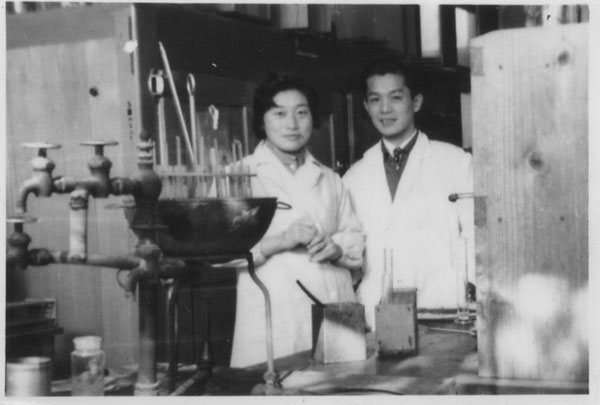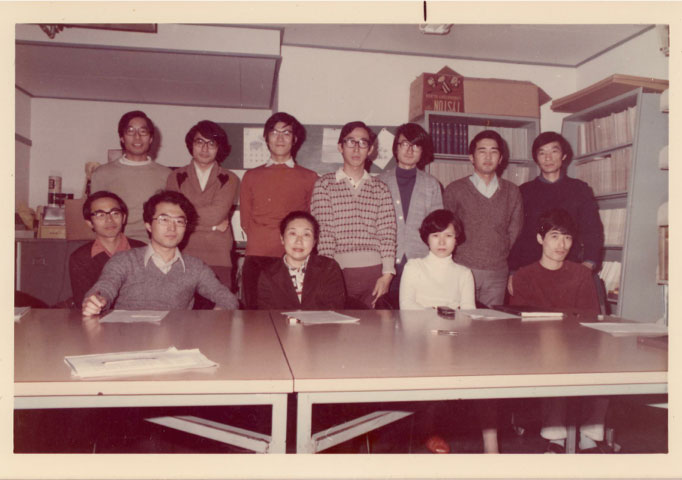Purpose of OKAZAKI Fragment Memorial Symposium:
Celebrating the 50th anniversary of the discontinuous DNA replication model


One of the mysteries of DNA replication after the proposal of semiconservative replicaiton model and discovery of DNA polymerase was how the double-stranded DNA consisting of two antiparallel chains can be replicated by an enzyme which can extend DNA chains only in one direction from 5' to 3'. The late Dr. Reiji Okazaki and his wife Tsuneko proposed that on the lagging strand DNA is discontinuously synthesized as short DNA fragments and that the fragments are ligated to become mature, longer DNAs, on the basis of their analyses on the nascent DNA fragments produced in E. coli infected with T4 phage. This short lagging strand DNA fragment was named "Okazaki fragment" and this name is still used worldwide today. Subsequent studies demonstrated that the discontinuous synthesis of lagging strand through Okazaki fragments was conserved through bacteria to animal cells, and has become one of the most basic principles on DNA replication. Reiji died of leukemia at the age of 44 in 1975, due to radiation exposure in Hiroshima when he was a second year student at a junior high school. Tsuneko took over Reiji’s wishes and continued to work on DNA replication at Nagoya University, clarifying further details on lagging strand DNA synthesis.
The finding of "discontinuous DNA replication" not only disclosed a universal principle of DNA replication, but also conceptually affected many fundamental problems in biology from mechanisms of biological evolution through the assymmetric mutations on the two DNA strands to determination of left-right asymmetry. It is widely regarded that Reiji would have won the Nobel prize if he had been alive. This unique innovative study was initiated and accomplished at the Nagoya University. Half a century has passed since the discovery of discontinuous DNA replication, and we would like to celebrate this occasion by having the OKAZAKI Fragment Memorial Symposium at the exact location where this one of the greatest discovery in biology was made.
Organizing committee
逆平行(antiparallel)な二本の鎖からなる二重鎖DNA が、5’から3’への一方向にしかDNA 鎖を伸長できないDNA ポリメラーゼによりどのようにして複製されるかは、1960 年代のDNA 複製メカニズムに関する大きな謎であった。故岡崎令治博士と岡崎恒子博士は、T4 ファージ感染大腸菌を材料に用いて、3‘→5’伸長鎖(ラギング鎖)が短いDNA 断片として不連続に合成され、後に連結されることを発見した。この短いラギング鎖DNA 断片は”岡崎フラグメント”と名付けられ、現在も世界的にこの名称が用いられている。その後の研究から、岡崎フラグメントによるラギング鎖の不連続合成は、すべての生物に共通な基本原理であることが確定し、ワトソンークリックが発見した「半保存的DNA 複製」とともに、DNA 複製の2大原理の一つとなった。令治博士は、広島で中学2年のときに被曝したことが原因で、1975 年、44 歳の若さで白血病でお亡くなりになった。その後、御夫人の恒子博士が、令治博士の遺志を継いで名古屋大学で研究を継続し、詳細な機構を解明した。
「不連続DNA 複製」は、DNA 複製の普遍的原理であるのみならず、生物の非対称性、進化に影響を及ぼす変異発生の原理など、生物学の基本的な問題にも大きな影響を及ぼした。特筆すべきは、岡崎令治博士がご存命であったら、ノーベル賞確実と言われていたこの発見が、名古屋大学において、全く独自のイノベイティブな研究として遂行され、発表された点である。不連続DNA 複製の発見から半世紀を迎える本年、「不連続DNA 複製モデル50周年記念シンポジウム」を開催し 故岡崎令治博士と岡崎恒子博士の業績を振り返り、その生物学へのインパクトについて改めて討議したい。
組織委員一同
